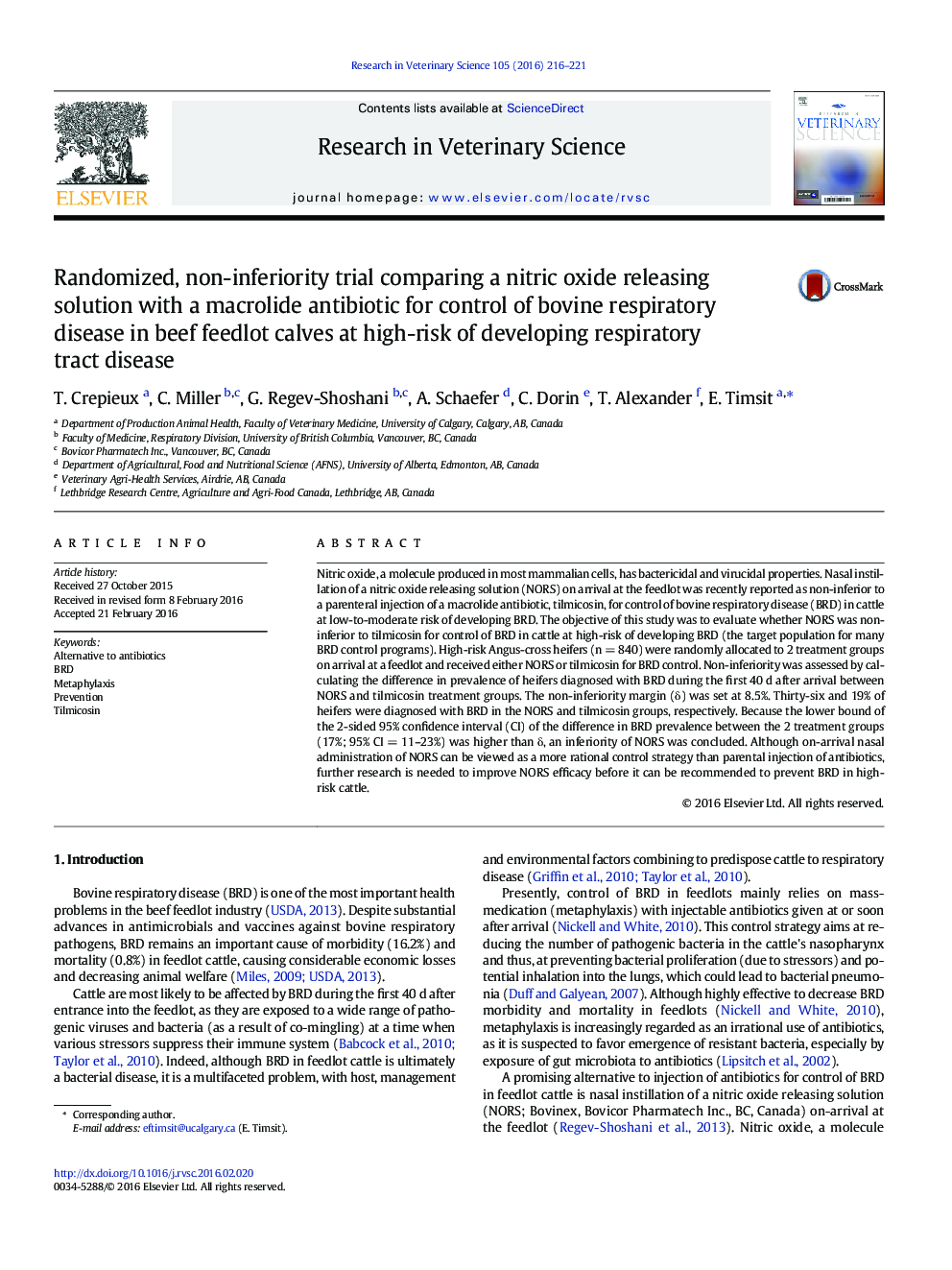| کد مقاله | کد نشریه | سال انتشار | مقاله انگلیسی | نسخه تمام متن |
|---|---|---|---|---|
| 5794402 | 1554306 | 2016 | 6 صفحه PDF | دانلود رایگان |
- A nitric oxide releasing solution (NORS) has been developed for control of bovine respiratory disease (BRD).
- Nasal administration of NORS was compared to parenteral injection of tilmicosin for BRD control in high-risk feedlot cattle.
- 36% and 19% of cattle were diagnosed with BRD during the 40 d following administration of NORS and tilmicosin, respectively.
- An inferiority of NORS compared to tilmicosin was concluded.
- NORS efficacy should be improved before it can be recommended to prevent BRD in high-risk cattle.
Nitric oxide, a molecule produced in most mammalian cells, has bactericidal and virucidal properties. Nasal instillation of a nitric oxide releasing solution (NORS) on arrival at the feedlot was recently reported as non-inferior to a parenteral injection of a macrolide antibiotic, tilmicosin, for control of bovine respiratory disease (BRD) in cattle at low-to-moderate risk of developing BRD. The objective of this study was to evaluate whether NORS was non-inferior to tilmicosin for control of BRD in cattle at high-risk of developing BRD (the target population for many BRD control programs). High-risk Angus-cross heifers (n = 840) were randomly allocated to 2 treatment groups on arrival at a feedlot and received either NORS or tilmicosin for BRD control. Non-inferiority was assessed by calculating the difference in prevalence of heifers diagnosed with BRD during the first 40 d after arrival between NORS and tilmicosin treatment groups. The non-inferiority margin (δ) was set at 8.5%. Thirty-six and 19% of heifers were diagnosed with BRD in the NORS and tilmicosin groups, respectively. Because the lower bound of the 2-sided 95% confidence interval (CI) of the difference in BRD prevalence between the 2 treatment groups (17%; 95% CI = 11-23%) was higher than δ, an inferiority of NORS was concluded. Although on-arrival nasal administration of NORS can be viewed as a more rational control strategy than parental injection of antibiotics, further research is needed to improve NORS efficacy before it can be recommended to prevent BRD in high-risk cattle.
Journal: Research in Veterinary Science - Volume 105, April 2016, Pages 216-221
